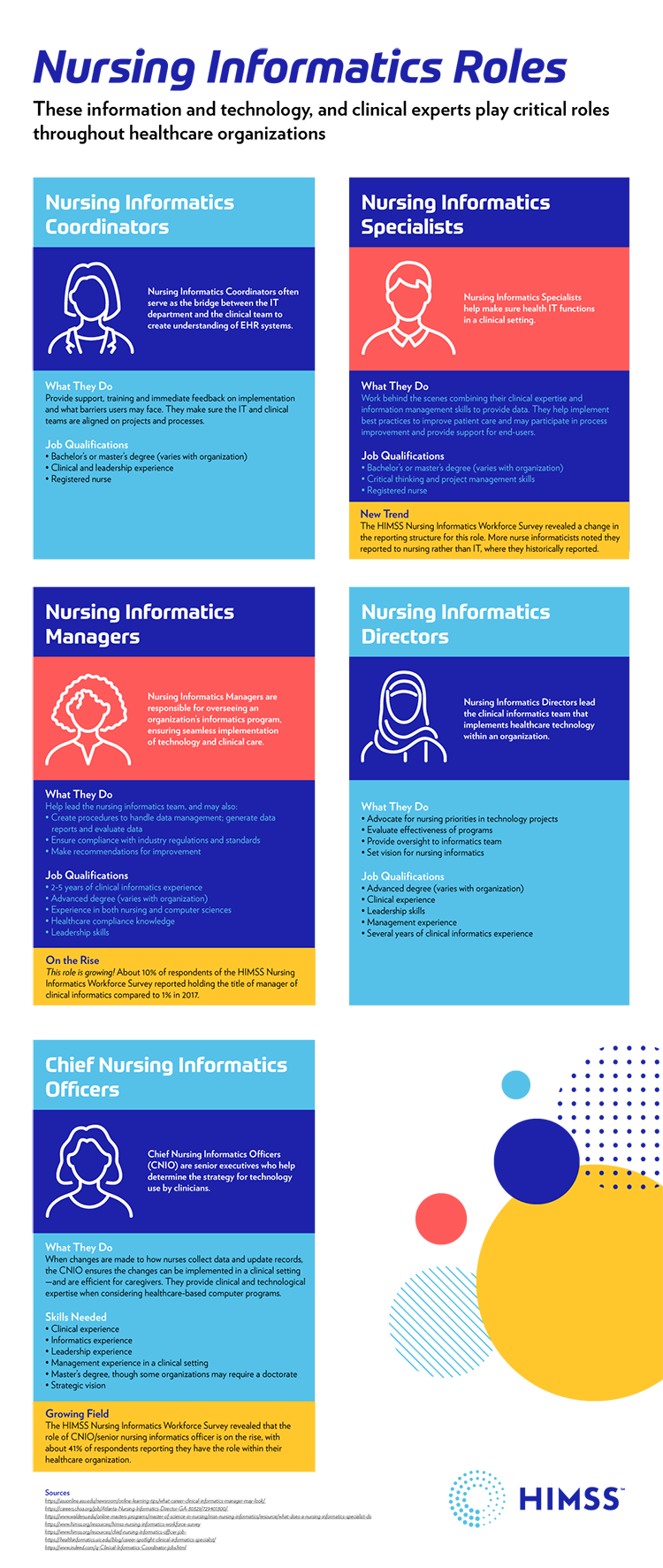
It’s not uncommon for clinical members to be at the patient’s bedside with a tablet or a smart device in hand while they update an EHR. Technology has made it easier for all types of nurses to do their jobs and gather important information.
But how do organizations know the best way to integrate technology with patient care? How do they make a new program or device easy for the clinical staff to use? How do they make the transition to a new process seamless so that the point-of-care is not impacted?
Enter the nursing informatics team. As technology continues to advance, we continue to rely on many types of nurses in informatics to bridge the gap between IT departments and clinical care.
Nurse informaticists were also essential during the pandemic, when healthcare systems rushed to increase their telehealth capabilities. Organizations had to transition many patients online, and the nursing informatic teams found new ways to provide patient care when in-person visits were not always possible.
Because of all the advances in technology, this career field is growing, according to the HIMSS Nursing Informatics Workforce Survey. The survey showed that 68% of respondents worked in a hospital setting.
These nurses are crucial because they can take their real-world clinical experience and provide feedback and direction for the implementation of healthcare technology. No one wants someone who has never taken a patient history to be the only voice when it comes to what the user interface should be when a nurse enters data into an EHR.
Because the need for nursing informatics has grown—the roles in the field have expanded as well. These experts are needed in every level of an organization, from interacting with end-users to being a part of executive-level strategic planning.
While there are many types of nurses in the field of informatics, each is essential when it comes to using data-driven decisions for those in clinical settings to create efficiency and provide support for those who work directly with patients.
“They are the driving force behind the development, implementation, and optimization of electronic medical/health records, nursing clinical documentation, point-of-care clinical decision support, and computerized practitioner order entry,” noted the HIMSS Nursing Informatics Committee members in their executive summary of the nursing informatics workforce survey.
There are plenty of opportunities for career advancement for those interested in pursuing this specialty. Here’s a rundown of some of the roles in the nursing informatics field.

Year of the Nurse and the Midwife
The World Health Organization declared this the Year of the Nurse and the Midwife. Our Nursing Informatics Community and supporters are coming together to celebrate the tireless and inspiring work of nurses around the world, today, this year and beyond.